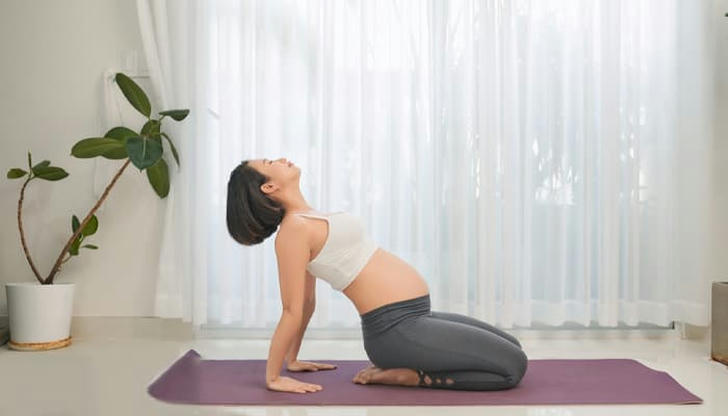Postpartum Recovery: Tips and Exercises for New Mothers

The postpartum period is a time of profound change for new mothers. After giving birth, the body requires time to heal and adjust, both physically and emotionally. While the experience can be overwhelming, it is also an important period for self-care and recovery. This article will discuss helpful tips and exercises for postpartum recovery, offering practical advice and solutions to common challenges.
Understanding Postpartum Recovery
Postpartum recovery refers to the physical and emotional healing process after childbirth. The time frame for recovery can vary for each mother, depending on various factors such as the type of delivery (vaginal or cesarean), the presence of complications, and overall health. Typically, it can take about 6 weeks for most mothers to recover, though full recovery can extend longer.
During this time, the body goes through several changes, including the shrinking of the uterus, healing of any vaginal or cesarean incisions, and hormonal adjustments. It's essential to pay attention to physical recovery while also addressing emotional well-being.
Common Postpartum Challenges
1. Physical Discomfort: Many new mothers experience physical discomforts, such as sore muscles, pelvic floor weakness, and back pain. These issues can be a result of the physical demands of pregnancy, labor, and childbirth.
2. Fatigue: After the birth of a baby, sleep deprivation becomes a common challenge. Managing a newborn’s needs while healing from childbirth can be physically exhausting.
3. Mood Changes: Hormonal fluctuations and the adjustment to motherhood can lead to mood swings, anxiety, and, in some cases, postpartum depression (PPD).
4. Pelvic Floor Issues: The pelvic floor is often weakened during childbirth, leading to issues such as urinary incontinence or pelvic organ prolapse.
5. Weight Loss and Body Image: Many new mothers may feel pressure to lose weight or return to their pre-pregnancy shape, which can affect their emotional health and self-esteem.

Tips for Postpartum Recovery
1. Prioritize Rest and Sleep: Newborns often require feeding every few hours, but it’s crucial for new mothers to rest as much as possible. Sleep deprivation can hinder recovery, so it's helpful to take naps when the baby sleeps or enlist help from family or friends.
2. Nutrition and Hydration: A healthy diet rich in vitamins, minerals, and proteins is essential for postpartum recovery. Focus on eating whole foods like fruits, vegetables, whole grains, and lean proteins. Hydration is also important for milk production, especially for breastfeeding mothers.
3. Pelvic Floor Exercises: Strengthening the pelvic floor is crucial after childbirth. Kegel exercises, which involve tightening and relaxing the muscles of the pelvic region, help in strengthening the pelvic floor. These exercises can reduce the risk of urinary incontinence and support overall pelvic health.
4. Gentle Movement and Stretching: Light exercise can help to ease muscle tension and improve circulation. Gentle movements like walking, postpartum yoga, and stretching exercises can gradually strengthen the body and improve flexibility without straining it.
5. Seek Emotional Support: It is normal to experience emotional ups and downs in the postpartum period. Openly communicating with your partner, friends, or family about your feelings can provide support. Additionally, if feelings of sadness, anxiety, or overwhelm persist, consider speaking to a counselor or therapist.
Exercises for Postpartum Recovery
After childbirth, it’s important to ease back into exercise carefully and progressively. Here are a few exercises that can help new mothers regain strength and flexibility:
1. Pelvic Tilts
Pelvic tilts are a gentle exercise that can help strengthen the lower back and abdominal muscles, reduce back pain, and improve posture.
How to do it:
● Lie on your back with your knees bent and feet flat on the floor.
● Tighten your abdominal muscles and gently push your lower back into the floor.
● Hold the position for a few seconds, then relax.
● Repeat 10-15 times.

2. Kegel Exercises
Kegel exercises strengthen the pelvic floor muscles, which may become weakened after childbirth.
How to do it:
● Contract the muscles you would use to stop urinating.
● Hold for a few seconds, then relax.
● Repeat 10-15 times, several times a day.
3. Postpartum Yoga
Yoga is an excellent way to restore flexibility, relieve stress, and strengthen the body after childbirth. Poses like Child’s Pose, Cat-Cow, and Downward Dog can help open up the hips, stretch the back, and gently strengthen the core.
How to do it:
● Start with gentle poses that focus on breathing and stretching.
● Gradually move into poses that engage the core and strengthen the pelvic floor.
4. Walking
Taking short walks with your baby in a stroller is a great way to ease back into exercise. Start with 10-15 minute walks and gradually increase the duration as you feel stronger.
5. Abdominal Exercises
Once cleared by your healthcare provider (typically around 6 weeks postpartum), you can begin to strengthen your abdominal muscles. Focus on exercises that engage the deep core muscles, like modified planks or leg lifts.

Real-Life Case Studies
Case Study 1: Sarah’s Postpartum Journey
Sarah, a 32-year-old first-time mother, gave birth to her daughter via cesarean section. Her recovery was challenging, and she struggled with pelvic floor weakness and back pain. At first, she was unable to sit for long periods due to discomfort. Her healthcare provider recommended a pelvic floor physical therapist and advised her to start with gentle Kegel exercises.
After six weeks of therapy and incorporating gentle yoga into her routine, Sarah noticed a significant improvement in her pelvic floor strength and back pain. She continued her daily routine of Kegels and added regular walks with her baby. By the time her daughter was 4 months old, Sarah was able to return to her pre-pregnancy activities, including light exercise, thanks to her consistent recovery routine.
Case Study 2: Emma’s Struggle with Postpartum Depression
Emma, a 28-year-old mother of two, faced severe mood swings after the birth of her second child. While she was physically recovering well, she struggled with postpartum depression, feeling isolated and overwhelmed. Emma’s doctor encouraged her to join a support group for new mothers and recommended light exercise to boost her mood.
Emma started attending a postpartum yoga class once a week and noticed that the mindfulness and deep breathing techniques helped reduce her anxiety. Additionally, speaking openly about her struggles in the support group allowed her to connect with other mothers facing similar challenges. Over time, Emma felt more confident in managing her emotional well-being, and she learned the importance of seeking support when needed.
Conclusion
Postpartum recovery is a vital process for new mothers, involving both physical healing and emotional support. By prioritizing rest, nutrition, and gentle exercise, mothers can recover effectively and regain their strength. It’s important to be patient and take things one step at a time. Whether dealing with physical discomfort or emotional challenges, remember that recovery looks different for every woman, and seeking support is an essential part of the journey.
By incorporating small, consistent changes into your daily routine—such as pelvic floor exercises, yoga, and emotional support—recovery can be a rewarding and empowering experience for new mothers.
